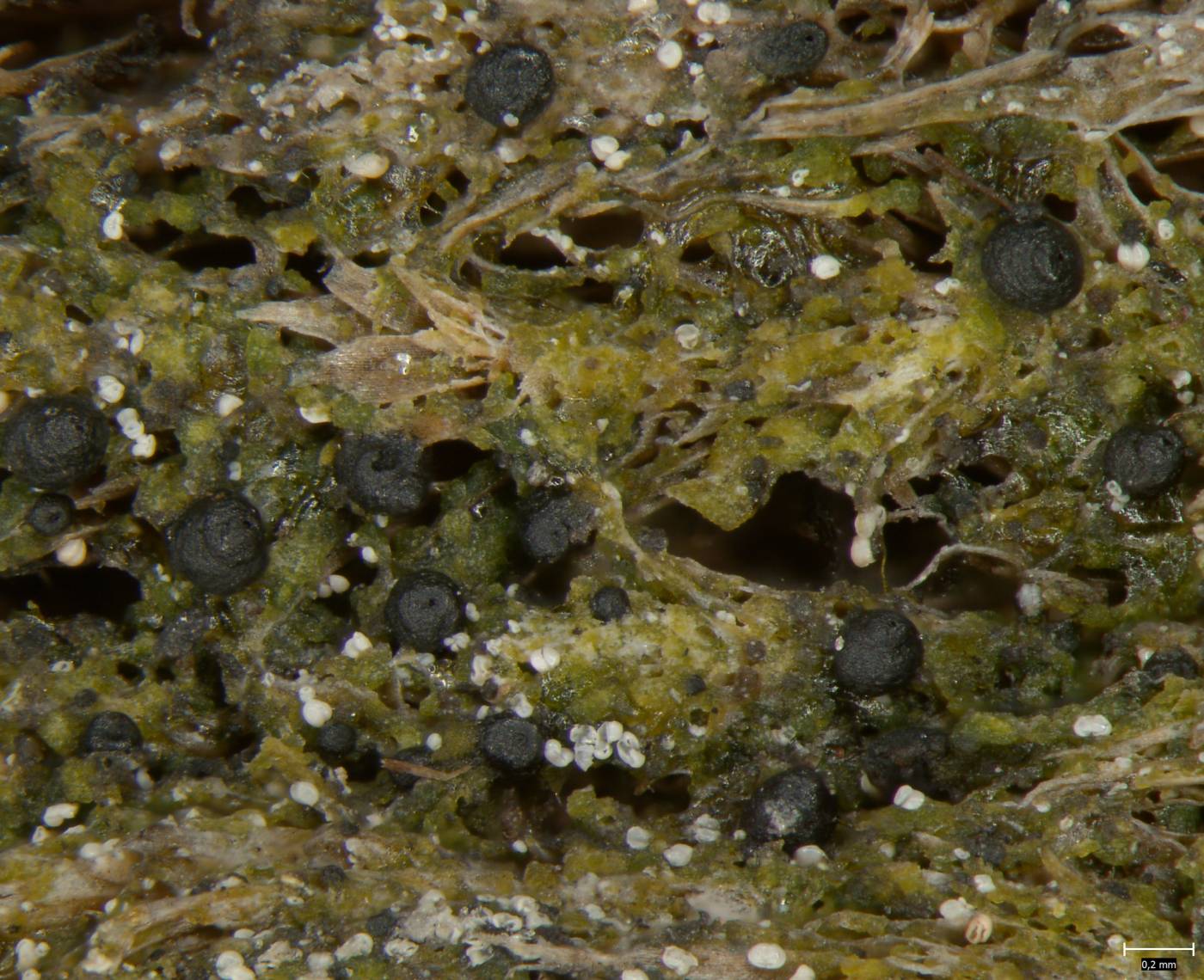A lichen similar in appearance and ecology to P. sphinctrinoides. With the appearance of slimy cover with black perithecia it grows on dead bryophytes, lichens and plant detritus. Compared to P. sphinctrinoides, it has smaller perithecia and smaller, less-septate spores (Mayrhofer & Poelt 1985). It is also distinguished by the absence of secondary metabolites detected by TLC (Ohmura & Mayrhofer 2016). It also grows on soil, contrarily to P. sphinctrinoides.
From the area of the Czech Republic, it was first published by Servít (1936, as Microglaena reducta) from four natural localities in the Žďárské vrchy hills, the Krkonoše Mts and their foothills. A part of the records is repeated in the author´s later works (see the Catalogue by Vězda & Liška 1999) and also in the monography of the genus Protothelenella (Mayrhofer & Poelt 1985). Subrecently, it was found in the Šumava Mts, also on secondary substrates, such as forest road notches or humid sandstone quarries (Vězda 1998). Since 2000, it has been recorded at about ten localities at middle and higher elevations scattered all around the area.
Literature: Mayrhofer H. & Poelt J. (1985): Die Flechtengattung Microglaena sensu Zahlbruckner in Europa. – Herzogia 7: 13–79. Vězda A. (1998): Lichenes rariores exsiccati. Fasciculus 38 (numeris 371−380). − Brno. Ohmura Y. & Mayrhofer H. (2016): Protothelenella sphinctrinoides (Protothelenellaceae) new to Japan and new chemical features for several species in the genus. – Herzogia 29: 137–142. Servít M. (1936): Neue und seltenere Flechten aus den Familien Verrucariaceae und Dermatocarpaceae. – Beihefte zum Botanischen Centralblatt, Abt. B, Dresden, 55: 251–274.
taxonomic classification:Ascomycota → Lecanoromycetes → Ostropales → Protothelenellaceae → Protothelenella
Red List (Liška & Palice 2010):NT – near threatened
Red List (Malíček 2023):C2 – strongly endangered
Occurrence in the Czech Republic
All records: 13, confirmed 10. One click on a selected square displays particular record(s), including their source(s).

